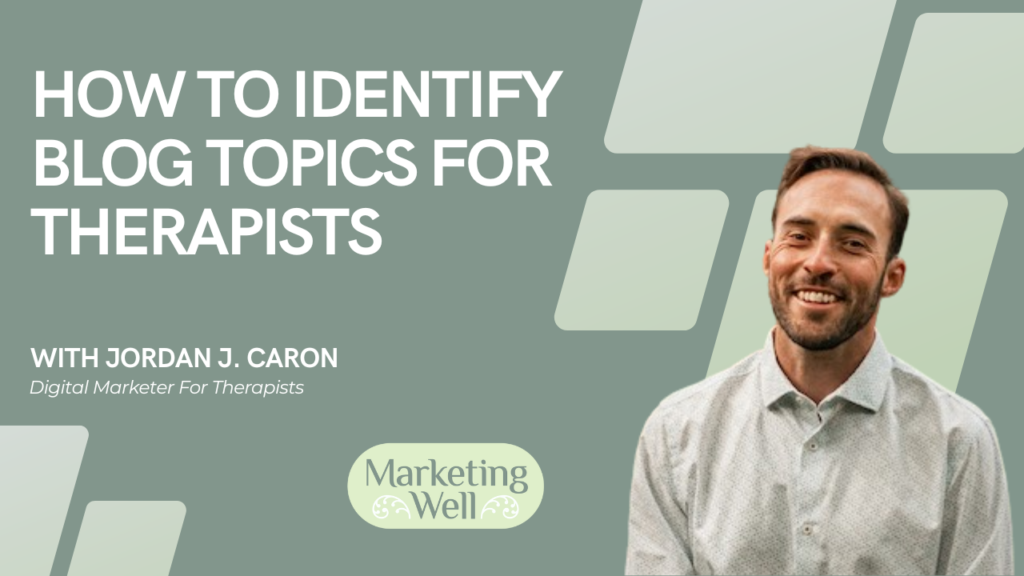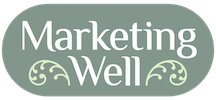During most SEO consultations with therapists, blogging and on-site content creation comes up. I have stated for many years that blogging is essential for many factors, not just SEO for therapists. Blogging helps build trust, credibility, and authority with potential clients who read your blog post(s), Google, and other search engines.
Before I discuss what type of blog posts you should write and where to get ideas, it’s essential to think about your ideal client and their issues. Then, write for people first.
Create People-First Content
The first priority for blog content is writing it for people first. Google has some tips on how to do that. The bottom line is that people-first content means content created primarily for people, not to manipulate search engine rankings.
Blogging helps improve your entire website’s search rankings, but we are not trying to manipulate them.
Now that that is clear, here are some resources and tips to help you quickly identify engaging content ideas for your therapy blog:
1 – Existing Clients

Image courtesy of Though Catalog on Unsplash
Draw upon some of the issues your past clients have faced. Since you are obviously not going to name anyone, use fake names and change other details.
- For content ideas, tap into the stories and experiences of your existing clients.
- Consider your specialties and tell compelling stories that resonate with your ideal client.
- Provide insights into your therapy process and link to your Services page to further engage your readers and keep them on your website longer.
2 – Niche Based Topics
If you serve a specific niche, focus on topics related to your specialization. Create a list of topics tailored to your niche, such as:
- Eating disorder treatment for teenagers
- Social anxiety and panic attack therapy for adults
- Couples who are having communication issues
- EMDR treatment for first responders
- Grief and loss counselling for families
Delve into specific stories and outcomes to give your readers a glimpse into the transformative power of therapy.
Tell a Story: Paint vivid pictures for your audience by sharing stories from your therapy practice. Whether you specialize in treating OCD, anxiety, or trauma, please describe how you’ve helped clients and the results they’ve achieved. Answer questions like:
- Why did your client seek therapy?
- How did you help them?
- What was the outcome for your client?
Use client-centred language and provide insights into your therapeutic approach to connect with your readers.
Highlight Your Services: Take the chance to showcase your services. Be sure to interlink to your service page within your blog posts, as interlinks are important for SEO. Also include a call-to-action to encourage readers to learn more:
“Interested in learning more? Refer to my PTSD Services for information on how I work with clients who have complex trauma.”
This boosts your SEO and encourages readers to explore your offerings further.
3 – Answer the Public

Use tools like Answer the Public to discover what questions people ask on Google. Look for questions related to therapy and address them in your blog posts. For example:
- Does therapy help with OCD?
- What is exposure therapy for OCD?
- What is therapy for OCD like?
Craft informative and engaging content that answers these questions, drawing from your experience as a therapist.
4 – Other Therapy Blogs
Search for other therapy blogs related to your niche and see what topics they write about. This should only be used as a source of inspiration, and you should always write about a topic in your own words. While reading the blog posts, think about the following:
- How can you improve upon this post based on your own experiences?
- Does the writing style captivate you and keep you interested?
- Can you make this blog post easier to read by adding pictures, headings and bullet lists?
Include a Call to Action
Every blog post should include a clear call to action. Whether it’s inviting readers to explore more articles, view your services, or book a free consultation, guide them towards the next step in their journey.
With these resources and tips, you’ll always have for your therapy blog. Embrace storytelling, highlight your expertise, and provide valuable insights to your readers. Happy blogging! Learn more about my SEO services for therapists or schedule a free 20-minute consultation here.




